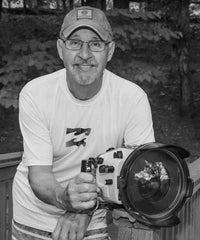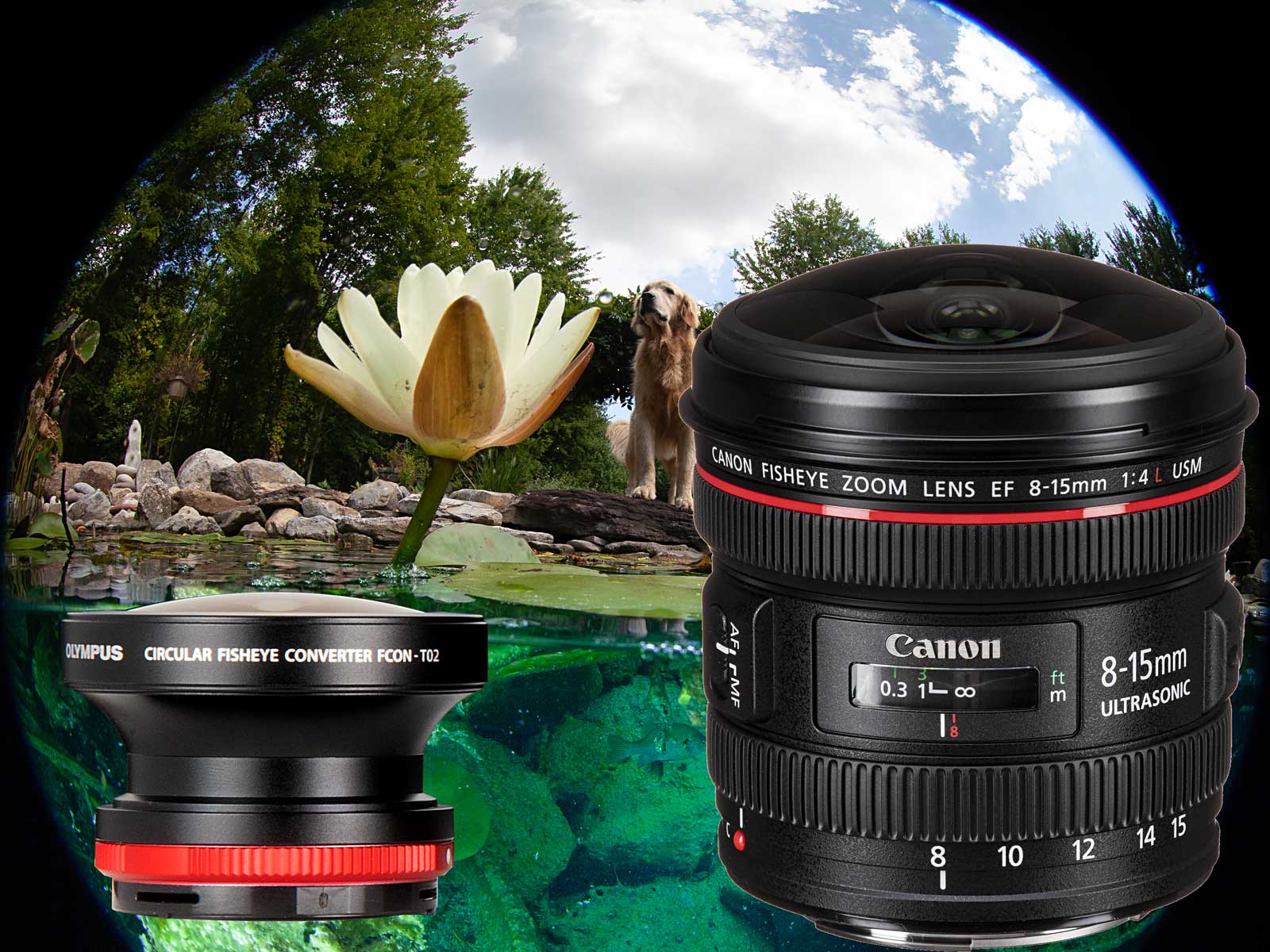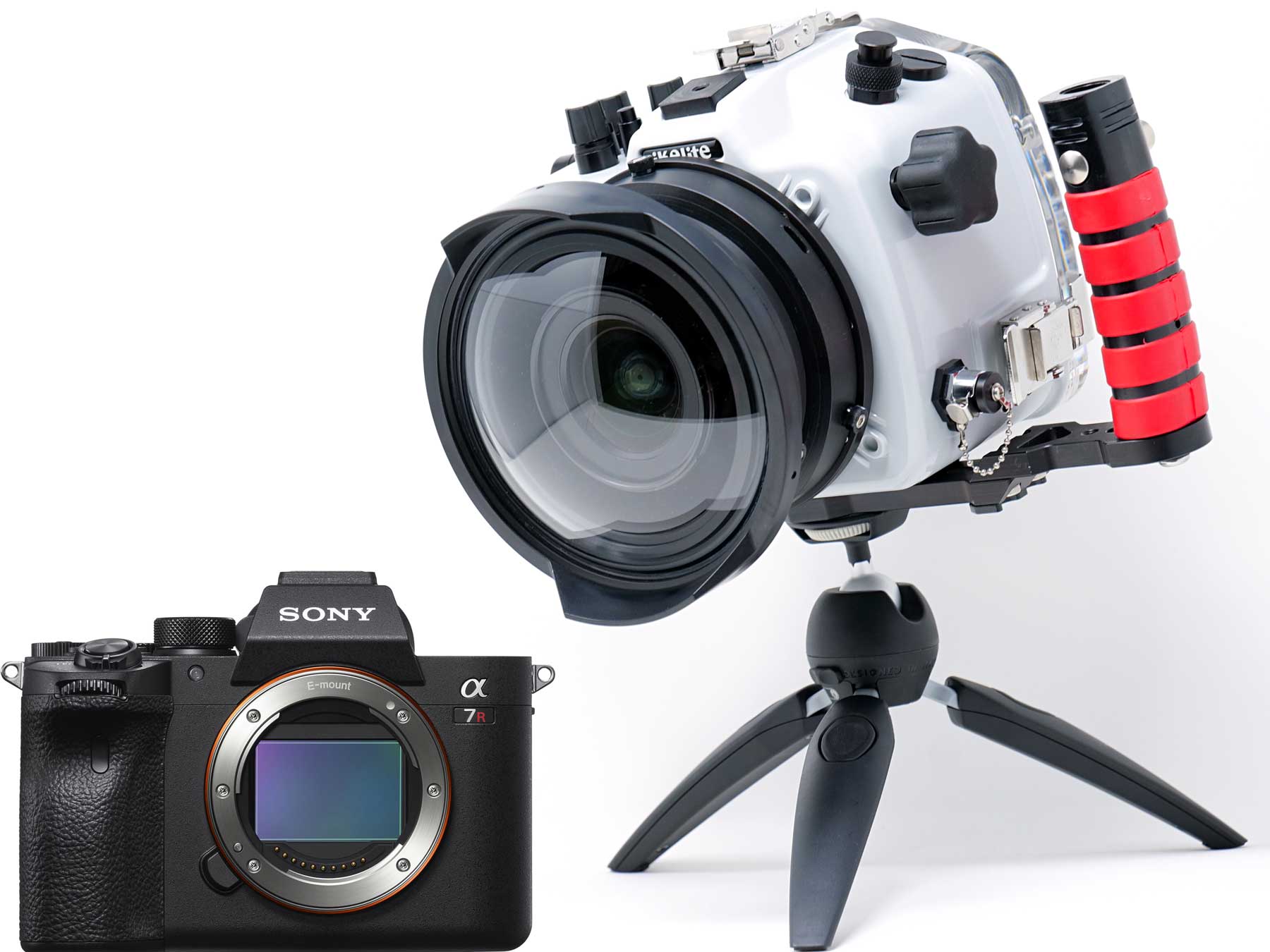By Ambassador Glenn Ostle
I recently had the opportunity to use the Nikon Z6 mirrorless camera on a trip to the Sea of Cortez as part of a trip run by Bluewater Travel. Once again, the new Z6 performed very well in a variety of macro and wide-angle situations.
The trip began with a flight to Phoenix followed by a 4-hour van ride to Puerto Penasco, Mexico, where Pam Hadfield and I boarded the Rocio Del Mar live-aboard for a week of photographing in the Midriff Islands and the northern part of the Sea of Cortez. This body of water that separates the Baja California peninsula from mainland Mexico, was once referred to by Jacques Cousteau as the “Aquarium of the World.”

60mm • ISO 400 • f/6.3 • 1/125 • This Triplefin Blenny was sitting still just waiting for his close-up. I particularly like the soft muted colors in the background.

25mm • ISO 500 • f6.3 • 1/125 • When this sea lion approached for a close look, my strobes lit up his face and added a small light to his eye.
Diving was accomplished by back rolling off pangas (small motorized boats) which allowed us to get close to the rugged islands that rise up out of the water like guano-covered fortresses. Water temperatures ranged from a high of 82 degrees on the surface, to a low of about 72 degrees at depth.
While we saw numerous varieties of marine life including colorful nudibranchs and lots of pretty gobies and blennies, the highlight of the trip was without doubt the playful sea lions that delighted in rocketing past divers and showing off their incredible underwater acrobatics.

30mm • ISO 500 • f8 • 1/160 • I had never seen a Jeweled Moray before. This one allowed me to get quite close, even though I was shooting with the wide-angle 14-30/4S lens.

70mm • ISO 320 • f10 • 1/125 • Using the 24-70/4S lens fully zoomed in, captured the look and uncompromising attitude of this Scorpion Fish.

60mm • ISO 400 • f6.3 • 1/125 • This tiny blenny poked his head out of a hole while I was shooting with the 60mm macro lens. In hindsight, a higher f-stop would have provided more depth of field and a little more sharpness.
These photos were taken using the Nikon Z6 full frame mirrorless camera in a 200DL Ikelite Underwater Housing with optional 45° Magnified Viewfinder, dual DS161 strobes, and DL1 DS Link TTL Converter. Lenses included: Nikon 24-70/4S, Nikon 14-30/4S, AF-S, and a NIKKOR 60mm 1.28G ED

14mm • ISO 2800 • f8 • 1/200 • The wide-angle 14-30/4S lens did a great job of capturing the detail in the colorful corals and sponges, at a high ISO.

60mm • ISO400 • f11 • 1/125 • The colors and designs on some fish, amaze me. Shooting at a higher f-stop helped darken the background.

24mm • ISO 280 • f/8 • 1/200 • In this picture I wanted to focus on the sun rays, so converting it to black and white minimized the impact of the colorful and frilly foreground.

60mm • ISO 400 • f/6.3 • 1/125 • We found quite a few Pike Blennies in the sand including this one that was out and swimming around.

All photos copyright © 2019 Glenn Ostle
 Ambassador Glenn Ostle has been taking underwater photos for more than 25 years, starting with Nikonos cameras in the 90s. Since switching to housed cameras, he has owned seven Ikelite housings. Before he retired, he spent 30 years in industrial marketing and 10 years as publisher and editorial director of a leading trade magazine. During that time he also contributed articles and photos to a Florida-based travel magazine, which he continues to do today. Glenn and his partner, Pam Hadfield, travel and dive extensively around the world. Besides underwater photography, he is also an avid bird and land photographer. His photos can be viewed at featherandfins.smugmug.com, and he posts photos regularly on Instagram @ostleglenn. Read more...
Ambassador Glenn Ostle has been taking underwater photos for more than 25 years, starting with Nikonos cameras in the 90s. Since switching to housed cameras, he has owned seven Ikelite housings. Before he retired, he spent 30 years in industrial marketing and 10 years as publisher and editorial director of a leading trade magazine. During that time he also contributed articles and photos to a Florida-based travel magazine, which he continues to do today. Glenn and his partner, Pam Hadfield, travel and dive extensively around the world. Besides underwater photography, he is also an avid bird and land photographer. His photos can be viewed at featherandfins.smugmug.com, and he posts photos regularly on Instagram @ostleglenn. Read more...
Additional Reading
In the Water with the Nikon Z6 Full Frame Mirrorless Camera
First Look Nikon Z6, Z7 Mirrorless Underwater Housing
Nikon Z6 Full Frame Mirrorless Underwater Photos
Capturing the Elusive Mouth Brooding Jawfish













